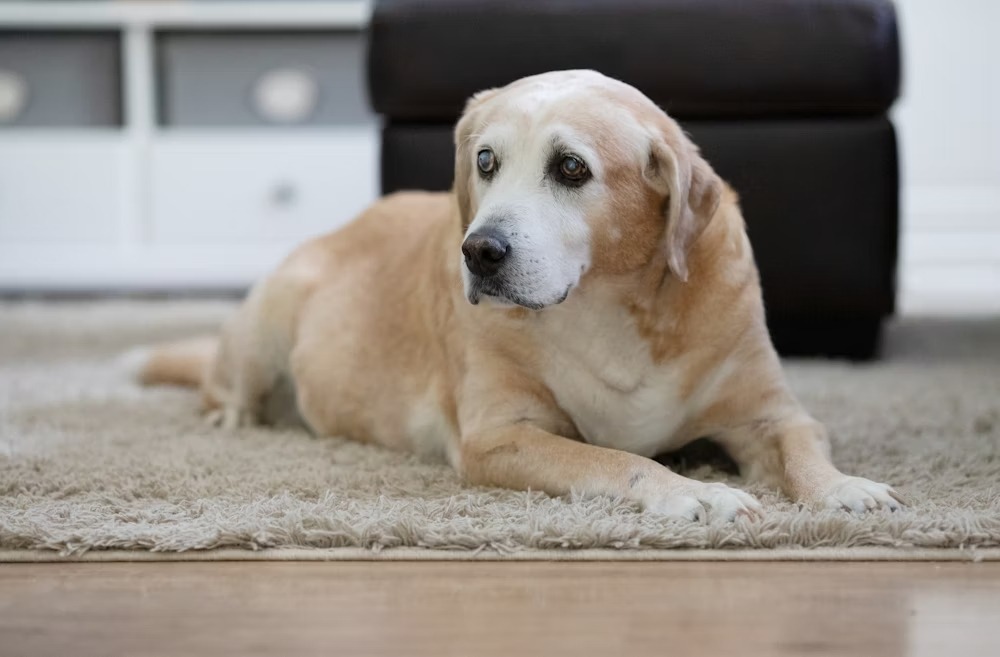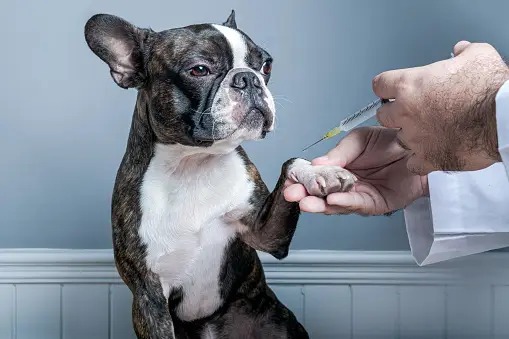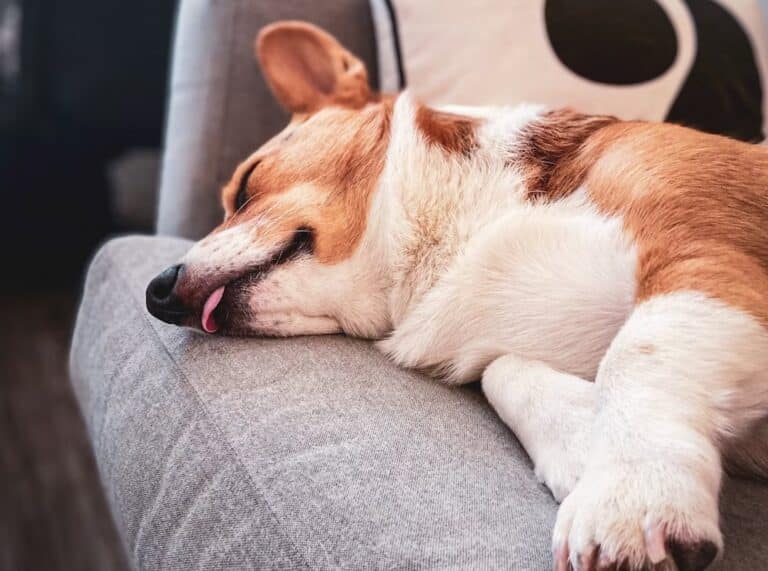As our dogs get older, they need some extra love and care to keep them happy and healthy. Taking care of a senior dog is a bit different, and there are a few simple things you can do to make sure they have the best life possible. In this article, we’ll talk about easy ways to take care of your older furry friend, like giving them the right food, making sure they get some gentle exercise, and visiting the vet regularly. By doing these simple things, you can make sure your senior dog stays happy and enjoys their golden years.
Understanding the Aging Process in Senior Dogs
As our furry companions grow older, it is important for us to understand the aging process they go through. By being aware of the changes that occur in senior dogs, we can provide them with the care and attention they need to lead a happy and healthy life.
Common health issues in senior dogs
Senior dogs are more prone to certain health issues compared to their younger counterparts. Some of the common health issues that senior dogs may face include:
- Arthritis: Joint pain and stiffness can be a common problem in senior dogs, making it difficult for them to move around comfortably.
- Dental disease: Older dogs are more likely to develop dental problems such as gum disease and tooth decay, which can lead to pain and difficulty eating.
- Cognitive decline: Aging dogs may experience cognitive decline, leading to symptoms similar to dementia in humans, such as confusion and disorientation.
- Heart disease: Senior dogs may develop heart conditions such as congestive heart failure, which can affect their overall health and quality of life.
- Cancer: The risk of developing cancer increases with age in dogs, and it can manifest in various forms, including tumors and abnormal cell growth.
Physical and cognitive changes
As dogs age, they undergo both physical and cognitive changes. It is important to recognize and adapt to these changes to ensure their well-being. Some of the physical and cognitive changes that senior dogs may experience include:
- Reduced energy levels: Senior dogs may have lower energy levels and may not be as active as they once were. It is important to provide them with appropriate exercise and rest to prevent overexertion.
- Weight gain or loss: Older dogs may experience changes in their weight due to various factors such as a slower metabolism or underlying health conditions. Regular monitoring of their weight is crucial for maintaining their overall health.
- Decreased senses: Aging can affect dogs’ senses, such as hearing and vision. It is important to make necessary adjustments in their environment to ensure their safety and comfort.
- Memory and cognitive decline: Senior dogs may experience memory loss and cognitive decline, which can result in confusion and behavioral changes. Providing mental stimulation and a consistent routine can help alleviate these symptoms.
Nutritional needs for senior dogs
As dogs age, their nutritional needs change. It is essential to provide them with a balanced diet that caters to their specific needs. Some key considerations for the nutritional needs of senior dogs include:
- Lower calorie intake: Senior dogs are generally less active, and their metabolism slows down. Adjusting their calorie intake can help prevent weight gain and maintain a healthy body condition.
- Joint support: Including ingredients such as glucosamine and chondroitin in their diet can help support joint health and alleviate arthritis symptoms.
- Digestive health: Older dogs may experience digestive issues such as a decreased ability to absorb nutrients. Providing easily digestible food and incorporating dietary fiber can aid in maintaining their digestive health.
- Essential nutrients: Senior dogs require a diet rich in essential nutrients such as vitamins, minerals, and antioxidants to support their immune system and overall well-being.
By understanding the aging process in senior dogs, being aware of common health issues, recognizing physical and cognitive changes, and addressing their nutritional needs, we can ensure that our aging companions receive the care and support they deserve for a happy and healthy life.
Providing Physical Exercise and Mental Stimulation
Low-impact exercises for senior dogs
As dogs age, their joints and muscles may become more fragile, making high-impact exercises unsuitable for them. However, it is still important to provide them with regular physical exercise to maintain their overall health and mobility. Here are some low-impact exercises that are perfect for senior dogs:
- Leisurely walks: Taking your senior dog on leisurely walks is a great way to keep them active without putting too much strain on their joints. Aim for shorter, more frequent walks to prevent fatigue.
- Swimming: Swimming is an excellent low-impact exercise that provides a full-body workout for senior dogs. It is gentle on their joints and helps to improve their cardiovascular health. If your senior dog enjoys the water, consider taking them for a swim.
- Gentle stretching: Stretching exercises can help to improve your senior dog’s flexibility and range of motion. Simple stretches like gently extending their legs and bending their joints can be beneficial. However, always be cautious and consult your vet before attempting any stretching exercises.
Brain games and interactive toys
Mental stimulation is just as important as physical exercise for senior dogs. Engaging their minds can help to prevent cognitive decline and keep them mentally sharp. Here are some brain games and interactive toys that can provide mental stimulation for your aging companion:
- Puzzle toys: Puzzle toys are designed to challenge your dog’s problem-solving skills. These toys usually require your dog to figure out how to retrieve treats or toys from hidden compartments. They provide mental stimulation and keep your senior dog entertained.
- Hide-and-seek: Hide treats or toys around the house and encourage your senior dog to find them. This game engages their sense of smell and keeps their minds active.
- Training sessions: Continue to train your senior dog with new commands or tricks. This not only provides mental stimulation but also helps to maintain their obedience and focus.
Enriching the environment
Creating an enriched environment for your senior dog can greatly improve their overall well-being. Here are some strategies to enrich their environment:
- Provide comfortable bedding: Aging dogs may develop joint pain or arthritis, so it is important to provide them with a comfortable and supportive bed. Opt for orthopedic beds that can relieve pressure on their joints and provide a good night’s sleep.
- Create a safe and accessible space: Ensure that your home is senior-dog friendly by removing any potential hazards such as slippery rugs or furniture with sharp edges. Install ramps or steps to provide easy access to their favorite spots.
- Rotate toys and activities: Keep your senior dog engaged by rotating their toys and activities regularly. This prevents boredom and provides them with new stimuli to keep their minds active.
By implementing these strategies, you can provide your senior dog with the physical exercise and mental stimulation they need to lead a happy and healthy life in their golden years.
Creating a Comfortable Living Environment
When it comes to senior dog care, creating a comfortable living environment is crucial for the well-being of your aging companion. Providing them with a cozy and stress-free space will not only enhance their quality of life but also contribute to their overall happiness and health. Here are a few strategies to help you create the perfect living environment for your senior dog:
Orthopedic beds and supportive bedding
As dogs age, their joints and bones become more prone to discomfort and arthritis. Investing in an orthopedic bed specifically designed for senior dogs can greatly alleviate their pain and provide them with the support they need. These beds are made with memory foam or other supportive materials that conform to your dog’s body, relieving pressure points and promoting better sleep. Additionally, consider using supportive bedding such as blankets or pillows to further enhance their comfort and give them a sense of security.
Temperature control and ventilation
Maintaining a suitable temperature inside your home is essential for your senior dog’s comfort. Older dogs are more sensitive to extreme temperatures, so it’s important to provide them with a living environment that is neither too hot nor too cold. During summer months, make sure they have access to shaded areas and fresh water to avoid overheating. In colder weather, consider using dog sweaters or coats to keep them warm. Proper ventilation is also crucial to ensure a steady flow of fresh air and prevent any buildup of odors or irritants that could affect your dog’s respiratory health.
Minimizing stress and anxiety
As dogs age, they may become more susceptible to stress and anxiety. It’s important to create a calm and peaceful living environment to help them relax and feel secure. Minimize loud noises and sudden disturbances that could startle or upset your senior dog. Establish a routine that includes regular exercise, feeding times, and play sessions, as this can help reduce anxiety. Additionally, consider using calming aids such as pheromone diffusers or calming music specifically designed for dogs to further promote a stress-free environment.
By implementing these strategies, you can create a comfortable living environment that addresses the specific needs of your senior dog. Remember, a happy and healthy aging companion starts with a nurturing and supportive living space.
Maintaining a Healthy Diet
As dogs age, it becomes increasingly important to provide them with a healthy and balanced diet that meets their changing nutritional needs. A good diet can help senior dogs maintain their overall health, vitality, and quality of life. Here are some essential strategies for maintaining a healthy diet for your aging companion:
Balanced Nutrition and Portion Control
One of the key aspects of senior dog care is ensuring that they receive a well-balanced diet. This means providing them with the right amount of essential nutrients, including proteins, carbohydrates, fats, vitamins, and minerals. A balanced diet can help support their immune system, maintain healthy weight, and prevent age-related issues.
Portion control is equally important for senior dogs. As they tend to have a slower metabolism and reduced activity levels, it’s crucial to ensure they are not overeating. Consult with your veterinarian to determine the appropriate portion size for your senior dog based on their breed, size, and activity level. Measuring their food accurately and avoiding unnecessary treats or table scraps can help prevent obesity and related health problems.
Special Dietary Considerations
Senior dogs may have specific dietary requirements or health conditions that need to be addressed through their diet. For example, some older dogs may develop dental issues, making it difficult for them to chew dry kibble. In such cases, switching to softer or wet food options can be beneficial.
Additionally, certain medical conditions such as arthritis or kidney disease may require dietary modifications. Low-sodium or low-protein diets, as recommended by your veterinarian, can help manage these conditions and support your dog’s overall well-being.
Supplements for Senior Dogs
In addition to a balanced diet, supplements can play a significant role in supporting the health of senior dogs. Joint supplements containing glucosamine and chondroitin can help alleviate arthritis symptoms and promote joint mobility. Omega-3 fatty acid supplements, such as fish oil, can benefit their skin, coat, and overall cognitive function.
However, it’s important to note that not all supplements are suitable for every dog. Before introducing any new supplement, consult with your veterinarian to ensure it is safe and appropriate for your senior dog’s specific needs.
By following these senior dog care strategies and maintaining a healthy diet, you can help ensure that your aging companion enjoys a happy and fulfilling life. Remember to consult with your veterinarian for personalized dietary recommendations and to address any specific concerns related to your senior dog’s health.
Regular Veterinary Care and Health Monitoring
Regular veterinary care is essential for senior dogs to ensure their overall health and well-being. As dogs age, they become more susceptible to various health issues and may require additional care and attention. Here are some key aspects of regular veterinary care and health monitoring for senior dogs:
Senior Dog Wellness Exams
Senior dog wellness exams are crucial for identifying and addressing any potential health concerns in aging companions. During these exams, the veterinarian will conduct a thorough physical examination to assess the dog’s overall health. They may also recommend additional tests such as blood work, urinalysis, or X-rays to screen for any underlying health conditions.
These wellness exams provide an opportunity for early detection of age-related diseases such as arthritis, diabetes, kidney disease, or cancer. By detecting these conditions early on, appropriate treatment plans can be implemented, helping to improve the quality of life for senior dogs.
Preventive Care and Vaccinations
Preventive care plays a vital role in keeping senior dogs healthy and preventing the onset of certain diseases. Vaccinations, in particular, are crucial for protecting senior dogs against various contagious diseases. While some vaccines are administered during the early stages of a dog’s life, booster shots may be necessary to maintain immunity as they age.
In addition to vaccinations, preventive care for senior dogs may also include regular parasite control, such as flea and tick prevention. These measures help safeguard senior dogs from common parasites that can cause discomfort and potentially transmit diseases.
Monitoring Changes in Behavior and Appetite
As dogs age, changes in behavior and appetite can be indicative of underlying health issues. It is essential for dog owners to monitor any changes and report them to the veterinarian during regular check-ups. Common changes to watch out for include:
- Decreased appetite or excessive thirst
- Weight loss or gain
- Lethargy or changes in energy levels
- Increased panting or difficulty breathing
- Changes in sleep patterns or restlessness
By closely monitoring these changes, veterinarians can detect early signs of age-related conditions and provide appropriate care. Regular communication with the veterinarian is crucial to address any concerns and ensure the well-being of senior dogs.
Managing Joint and Mobility Issues
Joint supplements and medications
One of the most effective ways to manage joint and mobility issues in senior dogs is by incorporating joint supplements and medications into their daily routine. These supplements are specially formulated to support joint health and can help reduce inflammation, alleviate pain, and promote better mobility.
There are various types of joint supplements available, such as glucosamine and chondroitin, which are known to enhance joint function and reduce cartilage breakdown. Omega-3 fatty acids and MSM (methylsulfonylmethane) are also commonly included in these supplements to provide additional support for joint health.
Additionally, medications such as nonsteroidal anti-inflammatory drugs (NSAIDs) can be prescribed by a veterinarian to manage pain and inflammation associated with joint issues. These medications can greatly improve a senior dog’s comfort level and overall mobility.
Physical therapy and rehabilitation
Physical therapy and rehabilitation can play a crucial role in improving joint and mobility issues in senior dogs. These therapies are designed to strengthen muscles, increase flexibility, and improve overall physical function.
Under the guidance of a professional therapist or veterinarian, senior dogs can benefit from a range of exercises and techniques such as hydrotherapy, massage therapy, and stretching. These therapies help reduce pain, increase blood flow to the joints, and improve the range of motion.
It is important to note that physical therapy and rehabilitation should be tailored to each dog’s individual needs and condition. Regular sessions and a consistent exercise routine can significantly enhance a senior dog’s joint function and mobility.
Assistive devices for mobility
In cases where joint and mobility issues severely affect a senior dog’s ability to move around comfortably, assistive devices can be invaluable. These devices are designed to provide support, stability, and ease of movement for dogs experiencing difficulties with their joints.
One commonly used assistive device is a dog wheelchair, which helps dogs with mobility issues in their hind legs to maintain an active lifestyle. These wheelchairs are custom-made and provide support to the dog’s hindquarters, allowing them to walk, run, and explore their surroundings without putting excessive strain on their joints.
Other assistive devices such as joint braces, harnesses, and ramps can also be beneficial in managing joint and mobility issues. These devices help distribute weight evenly, provide additional support, and make everyday activities easier for senior dogs.
By incorporating joint supplements and medications, utilizing physical therapy and rehabilitation, and using assistive devices, senior dog owners can effectively manage joint and mobility issues. These strategies can significantly improve the quality of life for aging companions, ensuring they remain happy and healthy throughout their golden years.
Final Thoughts
Taking care of a senior dog requires a combination of love, attention, and specialized strategies. By understanding the unique needs of aging companions and implementing various care techniques such as proper nutrition, regular exercise, regular veterinary check-ups, and mental stimulation, we can ensure that our beloved furry friends live a happy and healthy life in their golden years. With the right approach and a commitment to their well-being, we can provide our senior dogs with the quality of life they truly deserve. Remember, they have given us unconditional love and loyalty throughout their lives, and now it is our turn to return the favor by providing them with the best possible senior dog care.







